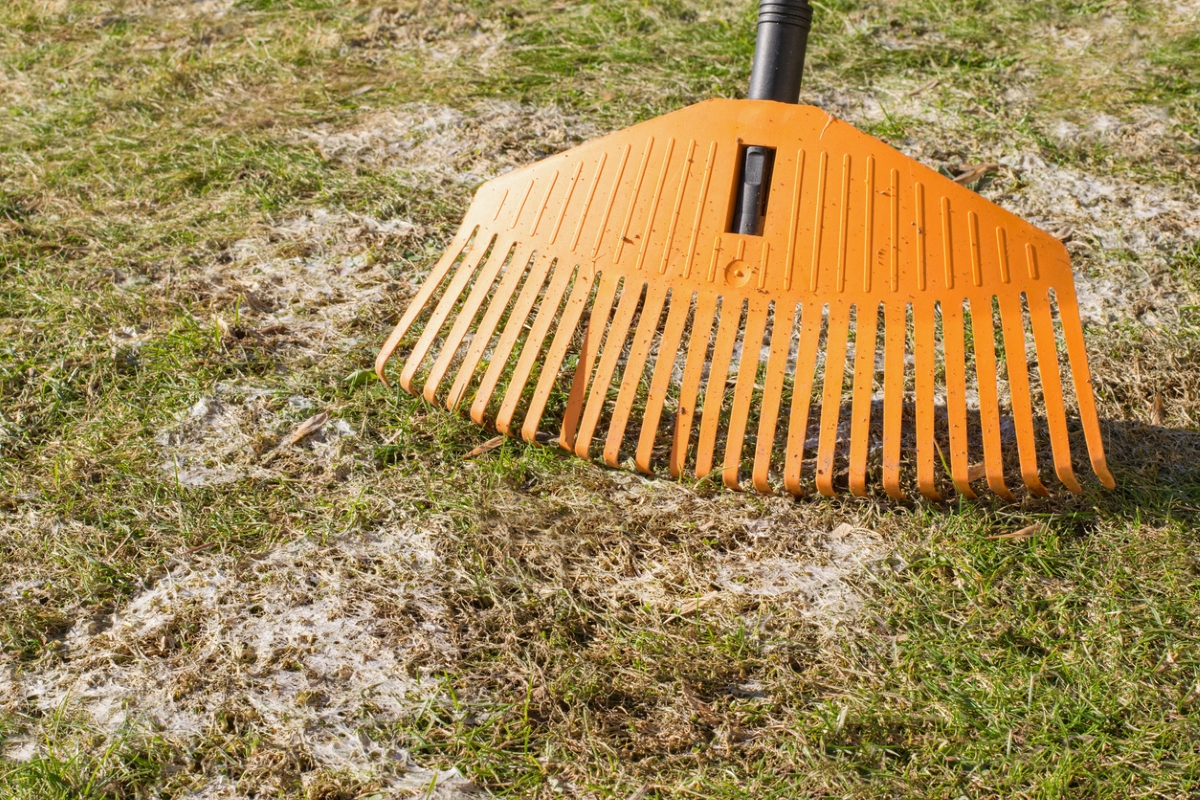We may earn revenue from the products available on this page and participate in affiliate programs. Learn More ›
Lawn fungus is a lawn disease caused by any of a number of fungi. Some of these fungi secrete chemicals that degrade plant cell walls and damage or break down the plant, leading to unsightly patches of lawn that may be dead or dying. Other fungi are not parasitic, but instead proliferate in such numbers that they cause grass to yellow.
Most grass fungus is the result of fungi attacking the leaves of turfgrass, but some fungi attack the crowns or roots of grass plants. Though these fungi can survive for many years in soil, It is extremely unlikely that yard fungus will harm humans or pets.
What does lawn fungus look like?
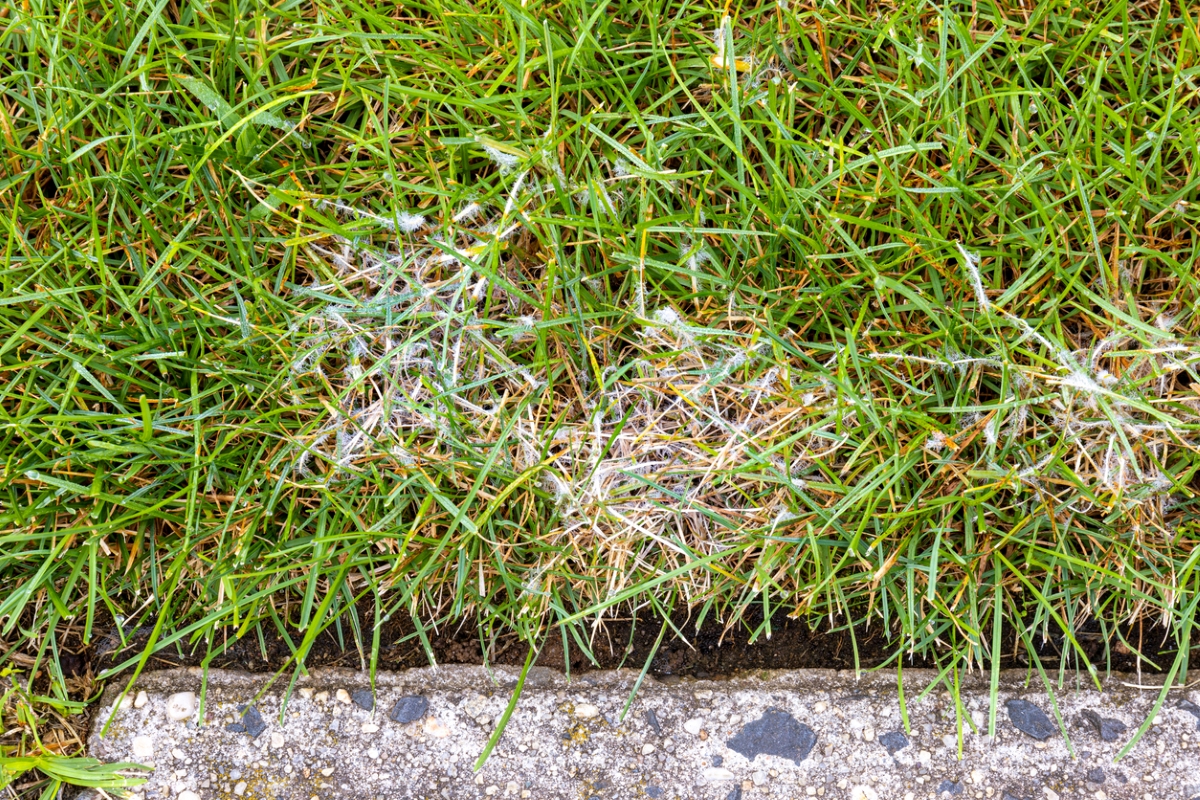
Lawns affected by lawn fungus often have unsightly brown or yellow patches. “It shows up in various forms—spots, patches, or a web-like coating on your lawn, and the appearance can vary widely,” says Bryan Clayton, CEO of GreenPal, an online service that helps homeowners find lawn care services. You might also see streaks, slimy areas, spots on individual leaf blades, discoloration, powdery blotches, or rings of lawn mushrooms.
What causes lawn fungus?
Of the 6 million types of fungi that call our planet home, a good number of them are happy to take up residence on our lawns, just to cause us misery. Pythium, for example, is a genus of fungi that can wreak havoc on turfgrass, resulting in large patches of dead, brown lawn. Fungi in the genus Puccinia cause any of a number of diseases called rust, which are typically characterized by pale yellow speckling on blades of grass. Laetisaria fuciformis causes a lawn disease called red thread.
Of course, many fungi live among us without causing any harm. However, when conditions are right, otherwise harmless fungi can cause severe lawn problems. “Fungus thrives in moist conditions, especially when your lawn is also dealing with poor drainage, too much shade, or overfertilization,” says Clayton. Long rainy seasons, overwatering, and even drought can contribute to a rise in lawn fungus.
Fungi can also spread via the wind, rain, and garden tools, including lawn mowers. Pets and people can spread fungi too.
How to Prevent Lawn Fungus
“The key to preventing lawn fungus is good lawn maintenance. Ensure your lawn has proper drainage, don’t overwater, and aerate your lawn to improve air circulation,” says Clayton. Adhere to the following best practices to help prevent lawn fungus.
Water your lawn early in the day.
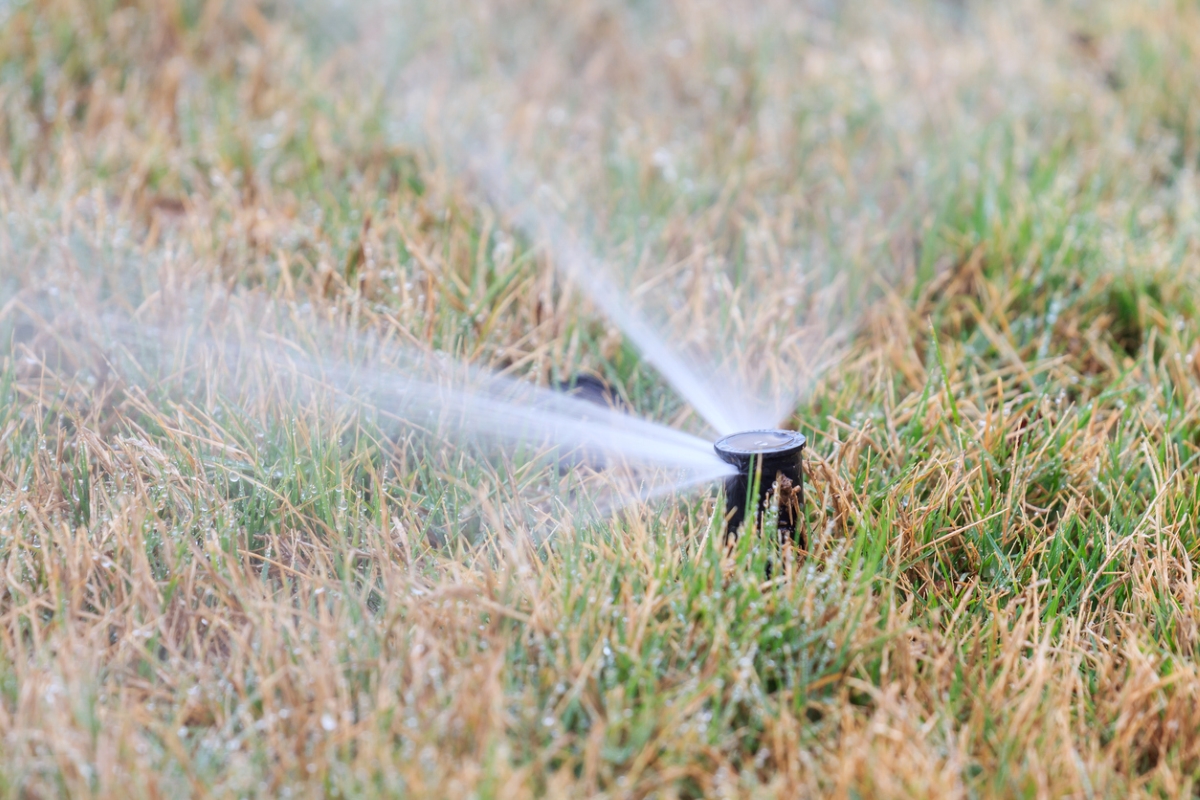
The sooner the grass dries up after watering, the less chance it has of developing lawn fungus. By watering grass early in the morning, you give your lawn the entire day to dry.
Mow properly.
“Mow at the right height for your grass type; too short can stress it out and make it more susceptible to disease,” says Clayton. Also make sure your mower blades are sharp. Dull mower blades tear off the tops of the grass leaves instead of cutting them, and ragged, frayed blades of grass are more susceptible to fungal disease than those with sharp, clean cuts.
Remove no more than one-third of the grass height when mowing. Cutting away more of the grass stresses and weakens it, increasing the risk of a fungal disease. Removing no more than one-third of the grass may mean mowing more frequently during times of quick growth, but it will help keep your lawn healthy, and a healthy lawn is a strong deterrent to lawn fungus.
Take care not to over- or underfertilize your lawn.
If your grass doesn’t have the nutrients it needs, it won’t develop a strong root and leaf system, yet if you apply too much fertilizer, you will encourage rapid blade growth that the roots cannot support. Both of these mistakes stress the grass and increase the risk of disease. Choose a fertilizer for your specific type of grass (fescue, Bermuda, and so on), and use a fertilizer applicator that you can regulate to dispense the exact amount of product recommended by the manufacturer.
Dethatch to remove dead grass.
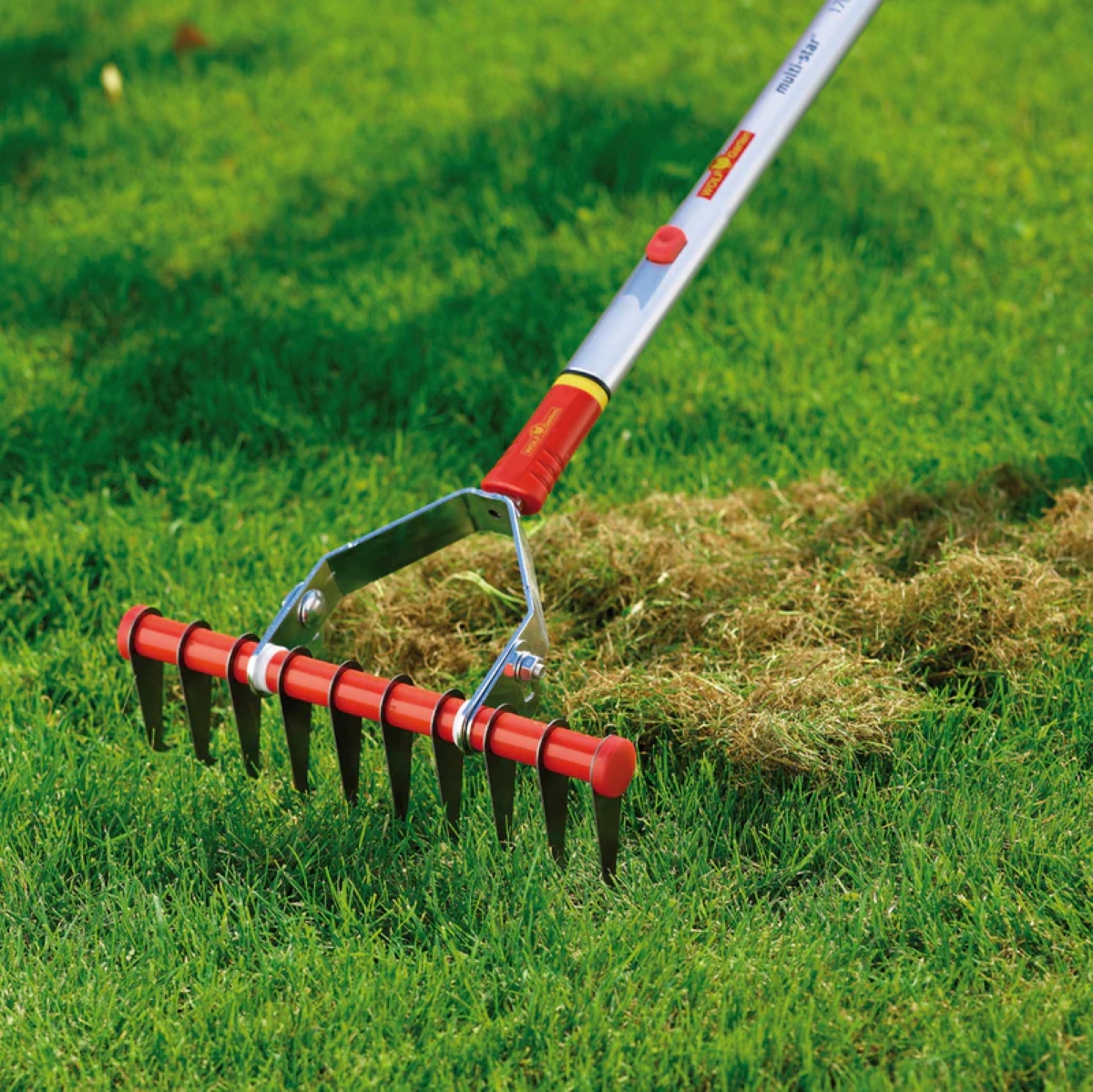
Over time, dead grass can build up at the soil level, choking out healthy grass blades and increasing the risk of lawn fungus. Dethatching is the process of removing the dead grass. This can be done manually with a dethatching rake, but it’s a time-consuming process. You may prefer to rent a power dethatcher from a lawn and garden center. Dethatching attachments are also available for some types of riding mowers.
Aerate your yard to loosen compacted soil.
Compacted soil can result from heavy clay content or excessive foot traffic, or from driving over your lawn or placing heavy items, such as construction supplies, on it for long periods of time. The condensed soil restricts healthy grass development and reduces drainage, both of which can lead to the growth of lawn fungus. The simplest option is to hire a landscape company to aerate the lawn, but if you’re DIY-inclined, you can rent or purchase a lawn aerator. Aerating removes small plugs of soil, loosening the ground and increasing circulation around grass roots. Lawns with soil heavy in clay will benefit from annual aeration, while other lawns should be aerated once every 2 to 4 years to maintain optimum health.
Check and amend your soil.
Most types of turfgrass grow best in well-drained soil with a pH level between 6 and 7. To ensure that your grass has the correct nutrients and pH level, take (or send) a soil sample to your local extension office. The Cooperative Extension Service (CES) is a branch of the USDA that works in conjunction with state universities to research and advise citizens on the best agricultural practices in their regions. On the CES website, you can locate the extension office in your county and find instructions for submitting a soil sample. After testing your sample, your extension office can provide information about soil amendments that can make your lawn healthier. This service usually runs less than $20.
How to Treat Lawn Fungus
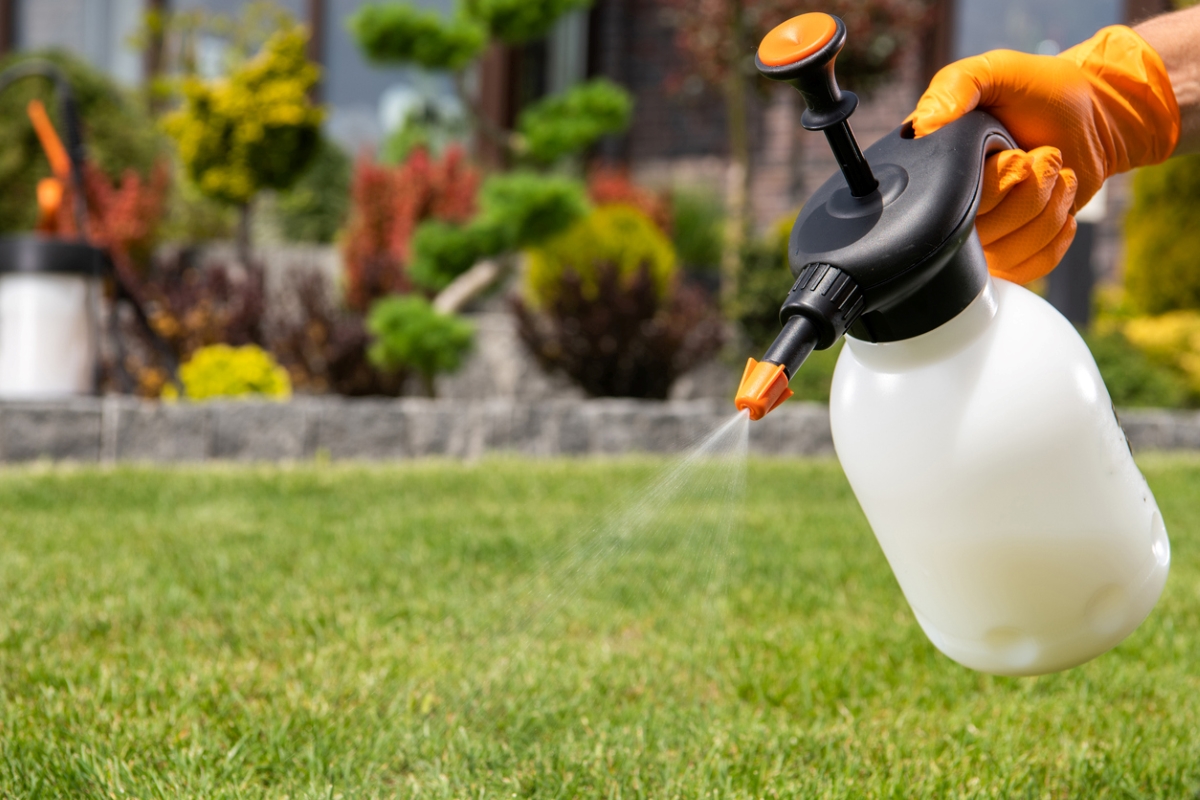
If you’ve done everything you can to prevent a fungal outbreak and yet it happens, you may have to resort to a chemical lawn fungus treatment.
A broad-spectrum lawn fungicide will treat many types of fungus and is usually a satisfactory fungus treatment for lawns. “Sometimes, a broad-spectrum fungicide can tackle various fungal issues,” says Clayton. “There are several fungicides out there, but a couple of common, effective options are azoxystrobin and propiconazole,” says Clayton.
For the best results, however, “it’s crucial to identify the specific type of fungus you’re dealing with to choose the right product,” Clayton says. Take (or send) a sample of the diseased turfgrass to an extension office, and request that the sample be tested to pinpoint the exact fungus that is causing the problem. You’ll receive detailed information that identifies the fungus and recommends the best lawn fungicides for treating it.
Final Thoughts
The best way to keep lawn fungus at bay is to maintain a consistent and vigilant lawn care program. If you have trouble coming up with a feeding and pest control schedule that brings out the best in your lawn, consider calling in a landscaping professional for a consult, asking around at the local garden center, or even trying out a DIY lawn care program. Odds are, if you keep your lawn healthy, you may also keep it fungus-free. If, despite your best efforts, you notice brown grass patches, powdery blotches, or other suspicious signs, know that early detection and treatment are key to lawn fungus control, so don’t put off applying a fungicide when necessary.

